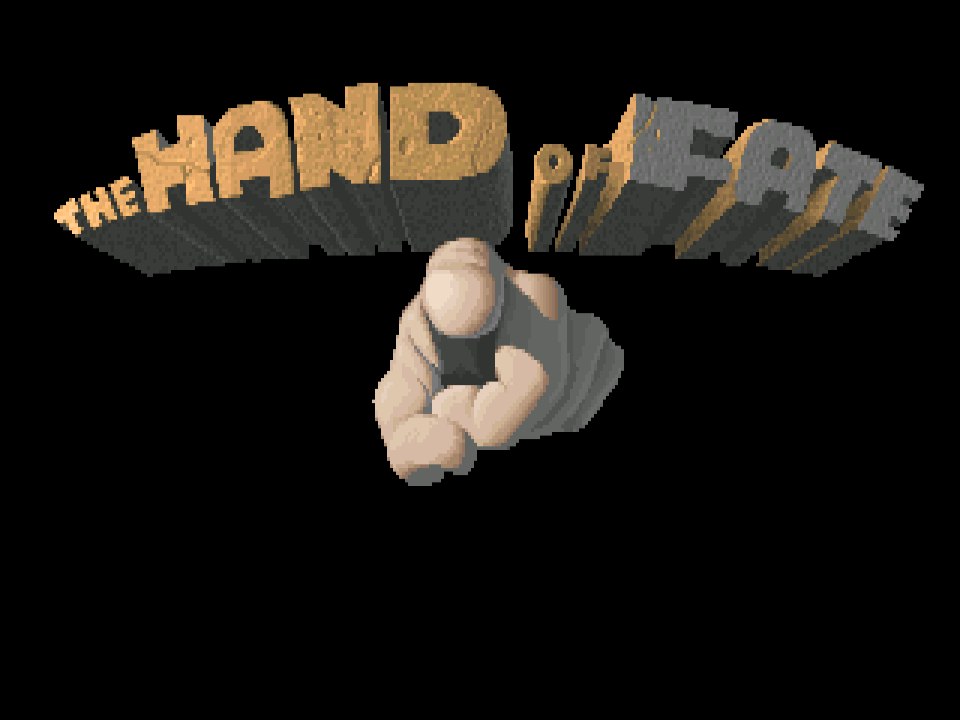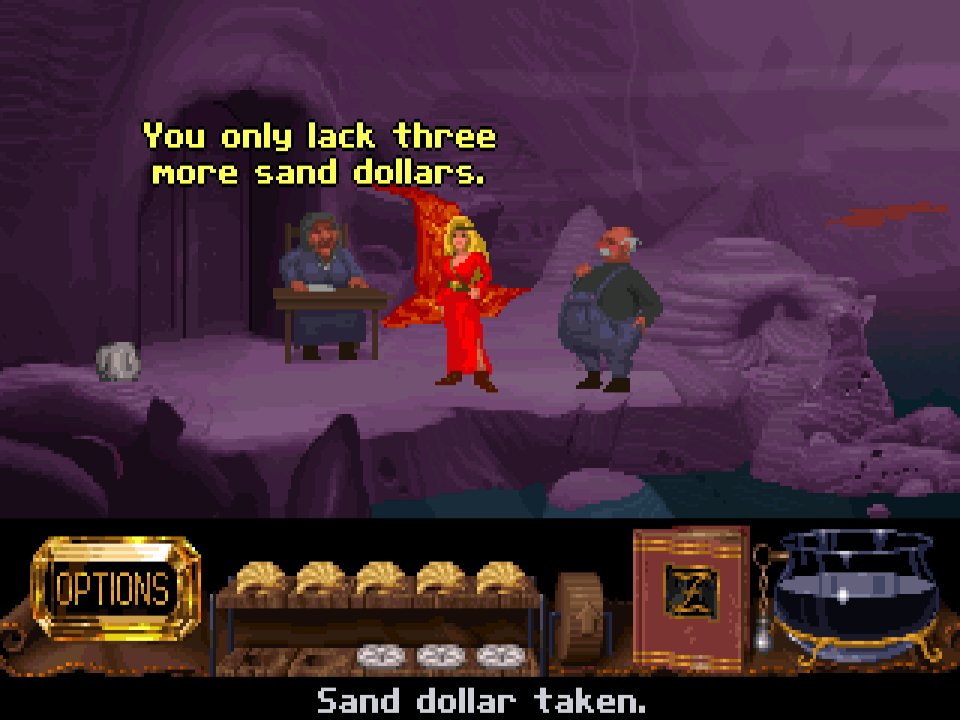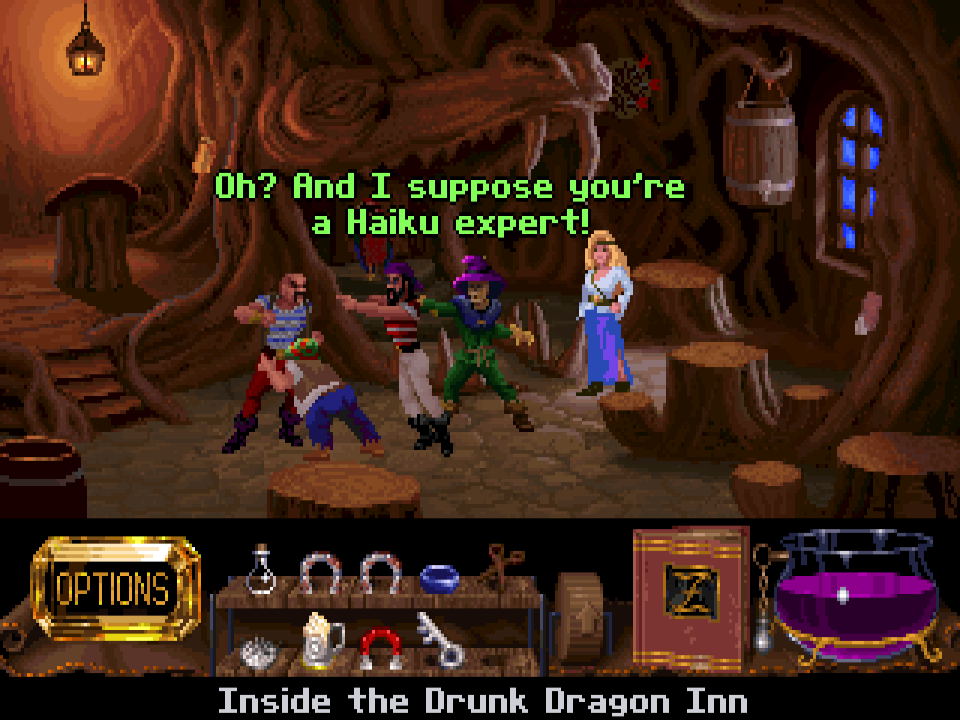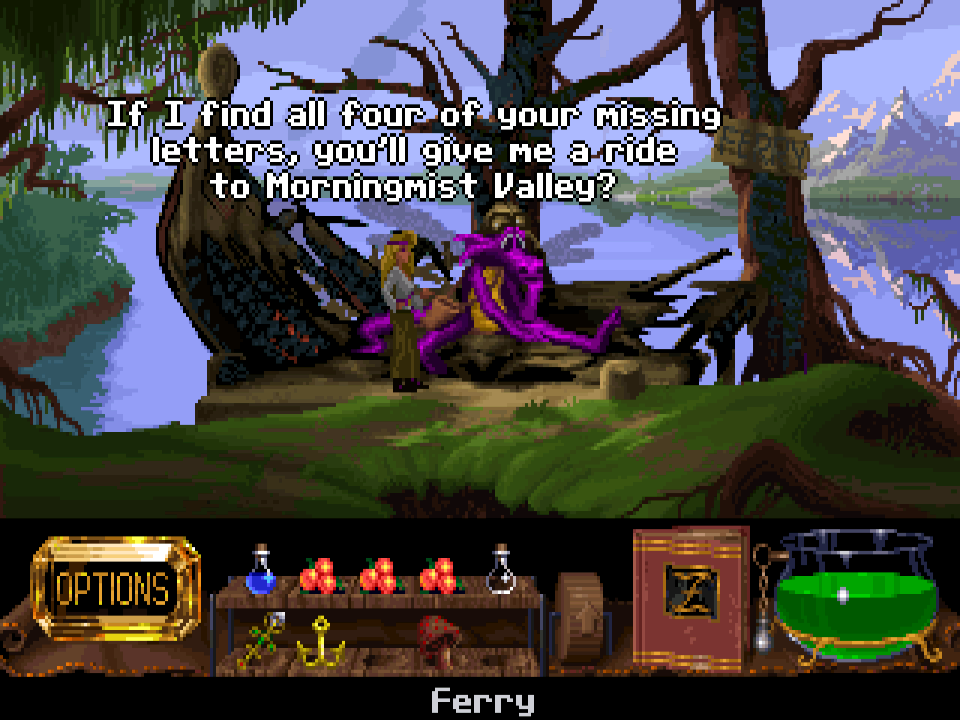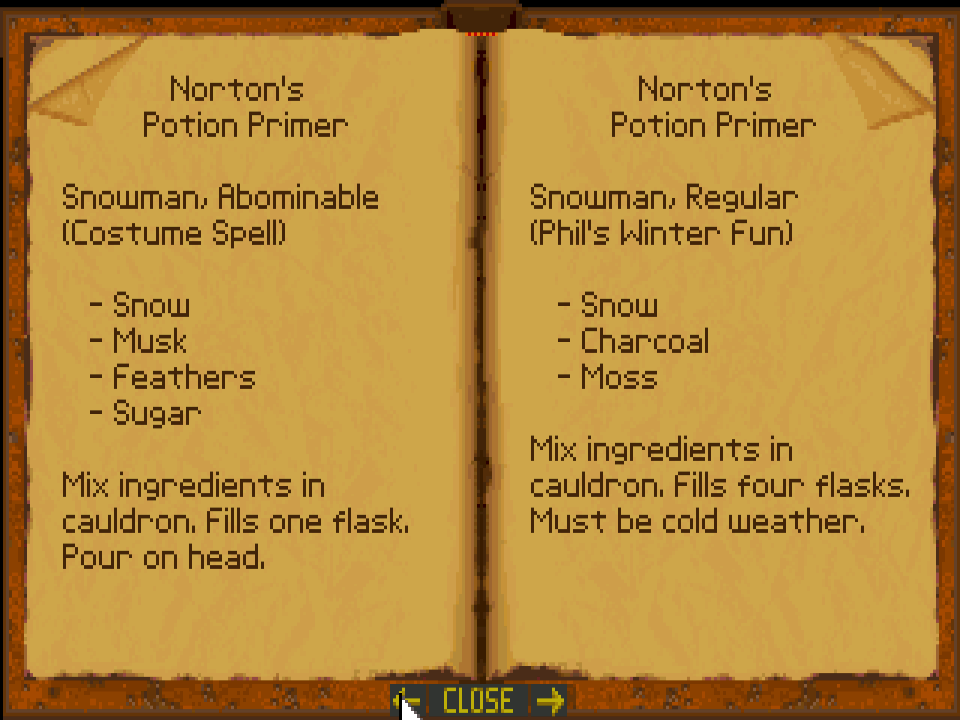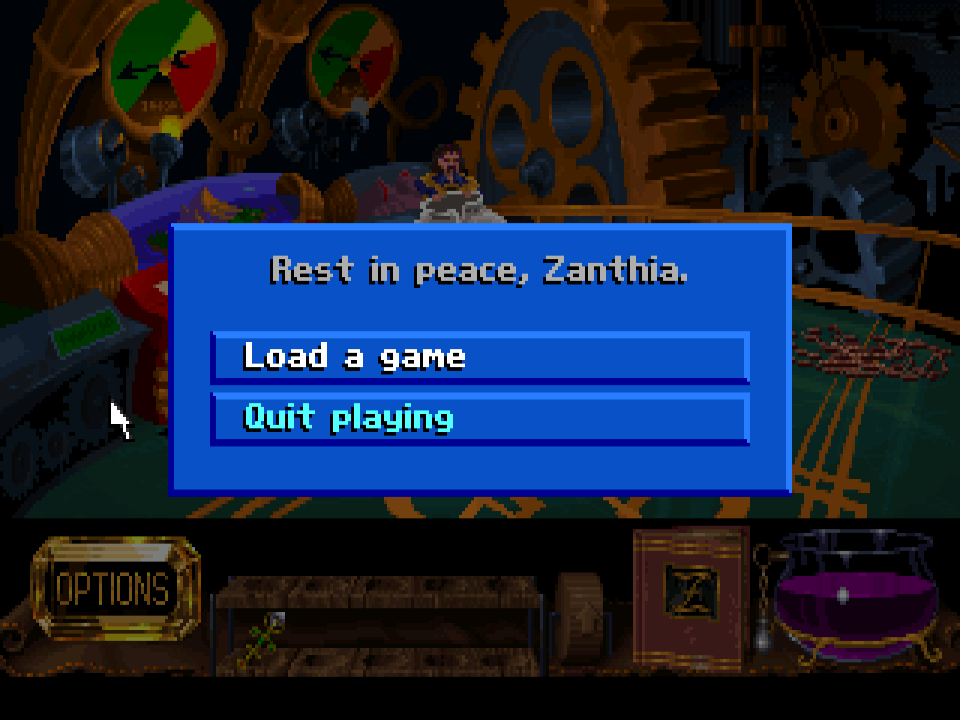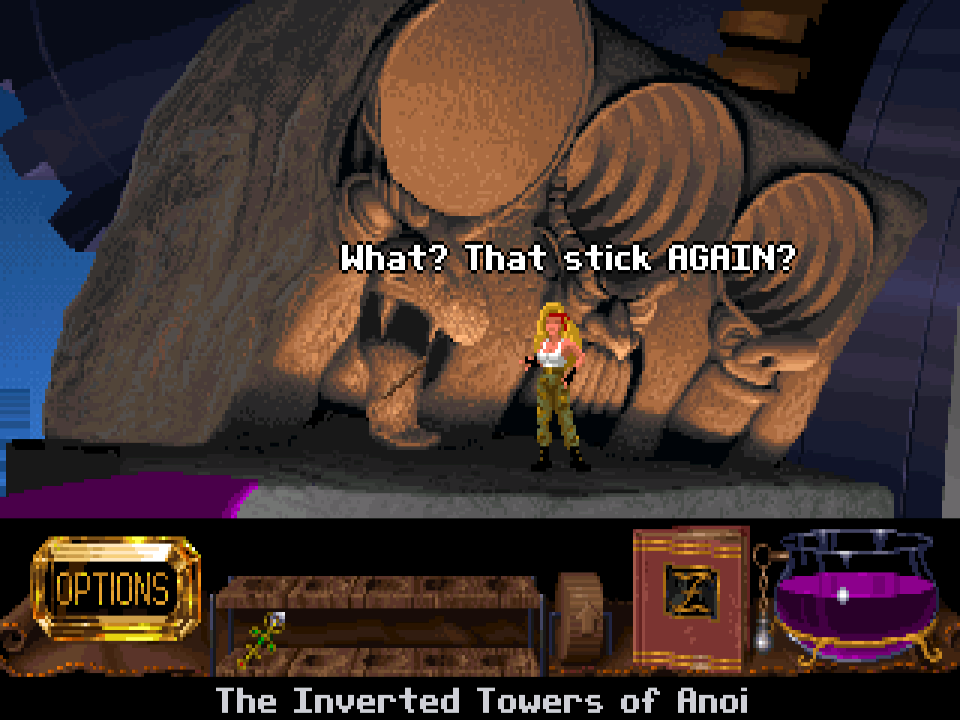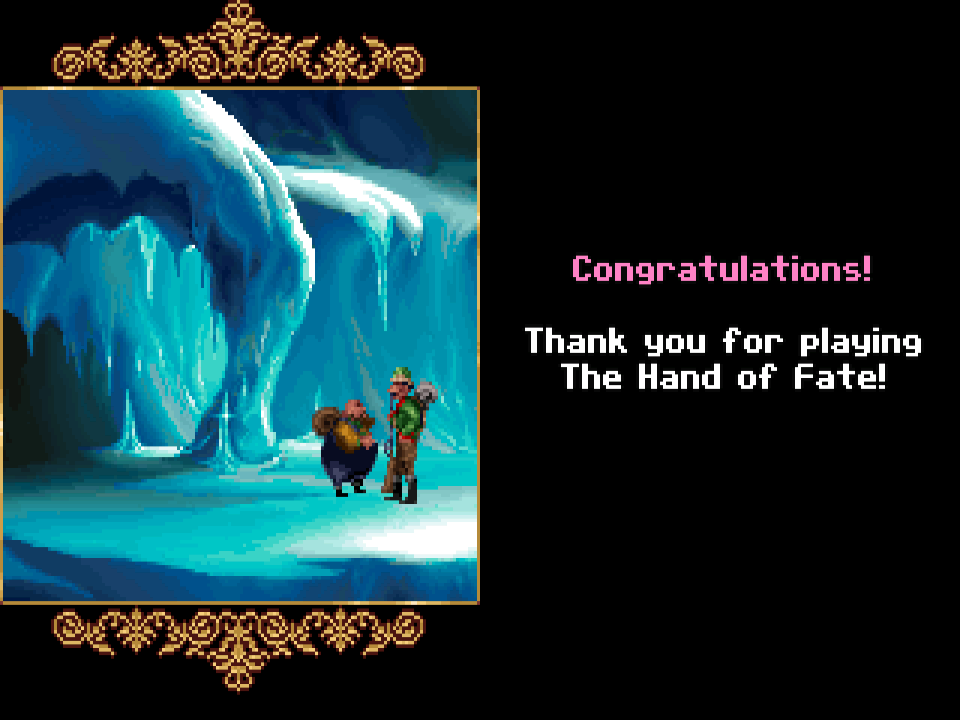The Legend of Kyrandia: Hand of Fate (Westwood Studios) - 1993
Series: Let's Adventure! A Journey into Adventure Games (1980-1999)This review is part of the Let's Adventure! series. See all reviewed games sorted by rating here.
- ← Pepper's Adventures in Time (Sierra On-Line) - 1993
- The Legend of Kyrandia: Hand of Fate (Westwood Studios) - 1993
- → Time Zone (On-Line Systems) - 1982
Article 97 of 101 in this series.
The Legend of Kyrandia: Book Two - Hand of Fate is a 2D point-and-click adventure game, developed by Westwood Studios and published by Virgin Interactive Entertainment in 1993. It is the sequel to the 1992 video game The Legend of Kyrandia, and the second game of the Fables & Fiends series. The game focuses on the story of a young alchemist and magician saving the kingdom of Kyrandia from being wiped from existence.
In the first part of this trilogy, Brandon, soon to be a king and only heir to the throne, determined to stop the evil jester Malcolm. Now, Kyrandia is disappearing. The high council found the cure for that - the anchor from the center of the world. When the young sorceress Zanthia comes to that anchor, she realizes it is not the answer. Her friend Marco is in possession of a giant hand, and it looks like that hand is responsible for the sabotage. Now, Zanthia must save Kyrandia before everything else vanishes without a trace.
Hand of Fate is the second installment in the Kyrandia series. The gameplay is similar to that of the previous game. Interaction is possible only with highlighted objects on the screen, and is reduced to a single cursor, without the distinction of separate commands. There are also no branching dialogues. Many of the puzzles involve picking up ingredients and concocting magic spells out of them.1
When I played through the original The Legend of Kyrandia: Fables and Fiends I can vaguely remember enjoying the plot and writing, but not nearly as much as this game. The writing here is really good. Good enough that it’s what I want to start this review by calling out.
Though I haven’t played through King’s Quest IV yet for this series, since I have played it in the past I found myself drawing parallels between Rosella and Zanthia more than once. I think Zanthia’s sense of humour might be a bit better though as there were definitely elements of Monkey Island-esque humor here as well.
Since I played through the CD version of the game I got to enjoy it with full voice acting, which definitely elevated the experience. The voice acting is quite good, especially Zanthia’s. I don’t see any additional voice acting credits for Bonnie Lynn Toups beyond this game and the sequel, but she made this a memorable experience for me.
To complement the great voice acting is the atmospheric soundtracke, which does a great job setting the tone for the game. Though some tracks may seem on the shorter side before they loop, none of them felt out of place or annoying. My personal favourite was the Darkmoor Swamp theme right at the beginning of the game.
The writing is good, the story is good and the puns … so many puns … are pretty good - though it can start to feel a bit forced at times. I have to admit I laughed a little louder than I’d like to admit when they described “the petrified forest”.
Having almost every character interaction and scene description over-leverage puns actually reminded me a bit of Companions of Xanth. It’s entirely possible the book (books?) that game was based on had some influence on the writers at Westwood when they were crafting the plot and dialog for this game.
Though the writing is excellent, the actual gameplay can get to be a bit tedious as it’s just one fetch quest after another. I had a lot of fun reading the descriptions of things and talking to everyone Zanthia met, but all you really do in this game is wander back and forth and pick stuff up.
The game is also extremely linear and the characters make it fairly obvious what they need you to find them so you can proceed. The story is pretty interesting though so even though you don’t have to work too hard to solve most puzzles, you will run across some extremely obtuse ones as you progress.
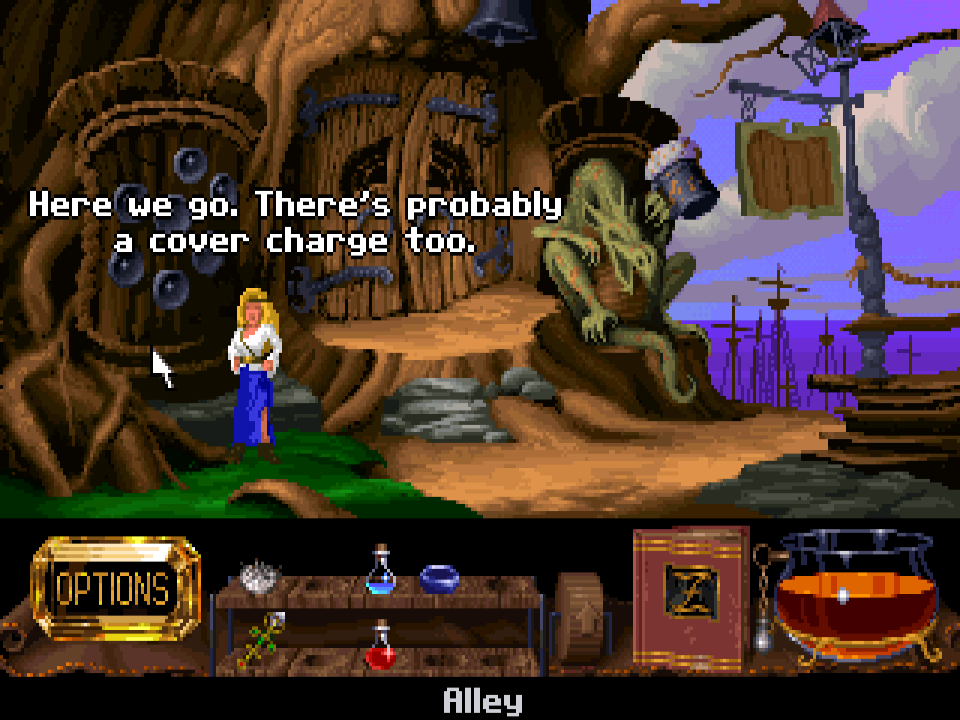 Make sure you remember that colour sequence from earlier if you want to get into the bar
Make sure you remember that colour sequence from earlier if you want to get into the bar
At the very beginning of the game there is a tree with some bugs in it that when examined flash in a specific sequence. YOU NEED TO WRITE THIS DOWN AND KEEP IT. The color sequence is the solution to multiple puzzles throughout the game, so keep it handy. This sequence is different every game apparently, but for posterity, mine was BARPYOG (Blue-Aqua-Red-Purple-Yellow-Orange-Green).
I didn’t realize I’d need this sequence later, and the only reason I happened to remember it is I wrote it down in the search bar of a browser tab as I was playing and accidentally searched for it. This allowed me to find it in my search history a couple days later when I got to the bar that needed the color sequence again 😅.
The most interesting mechanic of the game is the spell system. You first need to find your cauldron, then you can put ingredients into it to create potions, which represent magic spells. The spells themselves are found in your spell book, but it seems a number of pages are missing, which you periodically locate as the game progresses.
If you make a mistake, you can just dump your cauldron - which looks like you’ve flushed a toilet (likely by design). The ingredients tend to reappear on the screens where you found them, so making a mistake isn’t the end of the game. Occasionally you’ll need to combine items first before putting them in the cauldron, but the clues are usually pretty obvious when this is the case.
It is possible to die, but the death screen doesn’t try to be clever like a Sierra Online game. Since there are no tool tips or obvious action areas in this game, you just click around every screen and hope that you’ll find something to interact with.
This was really the most frustrating part of the game as it’s not always obvious what you should by trying to pick up, look at, talk to or walk to … it’s all the same action … left click. Sometimes, that results in your death … so save often.
The endgame isn’t hard - though it is frustrating. You’ll need to solve a reverse towers of hanoi puzzle, which if you’re unfamiliar just involves moving disks between 3 positions with only larger disks being placeable on smaller disks. You do this over and over until you move all disks from one side to another with the disks positioned from smallest to largest.
This wasn’t fun - and you had to do it twice to get the two items you need to finish the game. There was a running gag throughout the game about you finding a stick that you use to solve multiple puzzles, and it ends up being useful on the final screen of the game as well. I appreciate them “sticking” it out to the end like that (what? only Westwood is allowed to use bad puns 😛).
I tried not to give too much of the actual story away as it’s honestly pretty good and worth experiencing for yourself. Initially you think you need to find the anchors to stop the world from vanishing, but the it turns out you actually need to find the Wheels of Fate.
The running gag with Marko being there to save you but he just gets in the way is cute, but in the end he actually ends up being useful. I think this was meant to also be the romantic subplot to the game, but it wasn’t really all that well developed.
Though the gameplay itself wasn’t all that much fun and the puzzles were typically more annoying than enjoyable, given the excellent visuals, sound and voice acting I still felt this game was worth playing.
I enjoyed the experience a little more than the previous entry in the series, but overall would say this is a “middle of the pack” early 90’s adventure game.
Game Information
| Game | The Legend of Kyrandia: Hand of Fate |
| Developer | Westwood Studios |
| Publisher | Virgin Interactive |
| Release Date | 1993 |
| Systems | DOS, FM Towns, NEC PC-9801 |
| Game Engine | Kyra |
My Playthrough
| How Long To Beat? | 4.5 hours |
| Version Played | DOS via ScummVM |
| Notes | Walkthrough, Manual |
Score
See here for a refresher on how we’re scoring these games.
| Graphics (15) | 10 |
| Sound (10) | 7 |
| Plot / Progression (25) | 17 |
| Characters / Development (15) | 10 |
| Gameplay / Experience (15) | 8 |
| Replayability (5) | 2 |
| Impact / Impression (10) | 5 |
| Bonus / Surprise (5) | 1 |
| 60% |
Gallery
Footnotes
Description from Moby Games ↩︎
